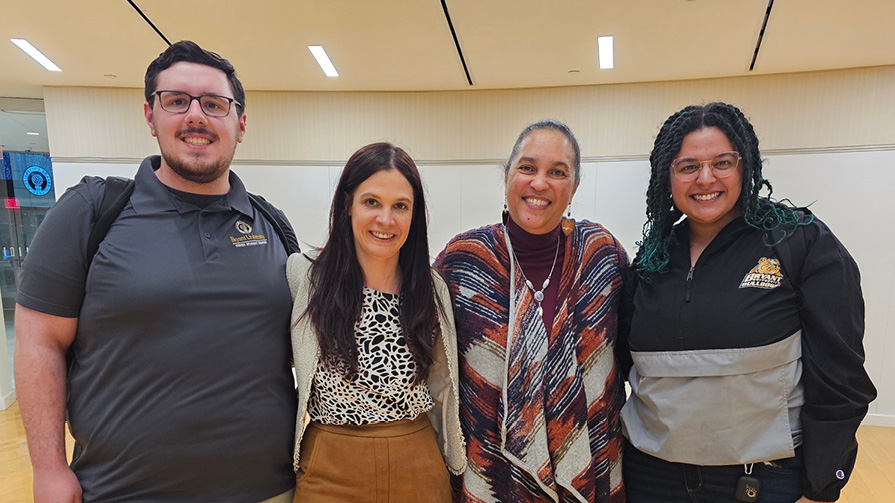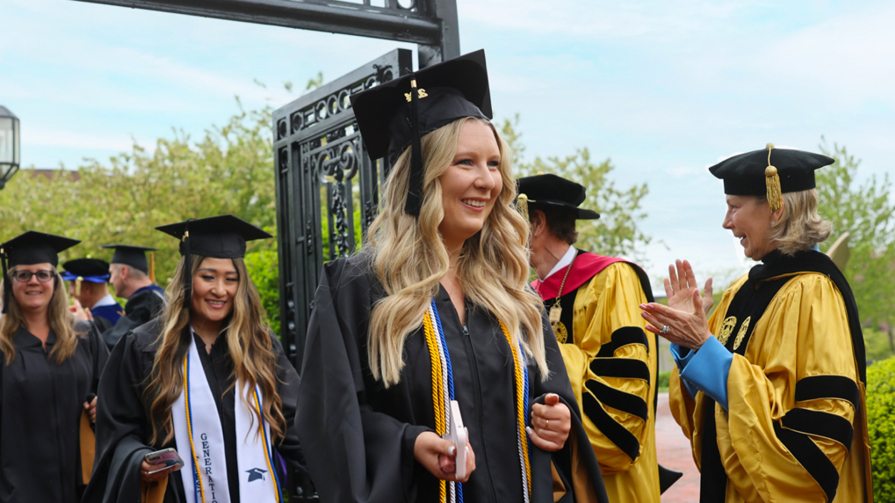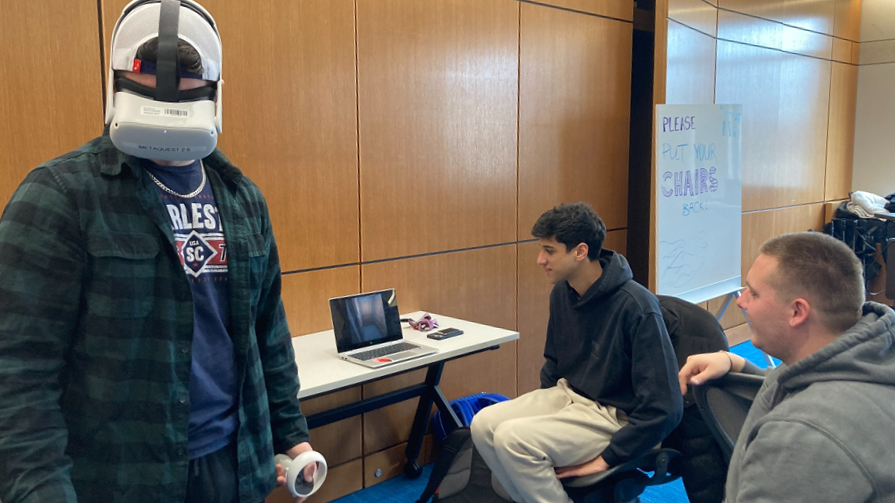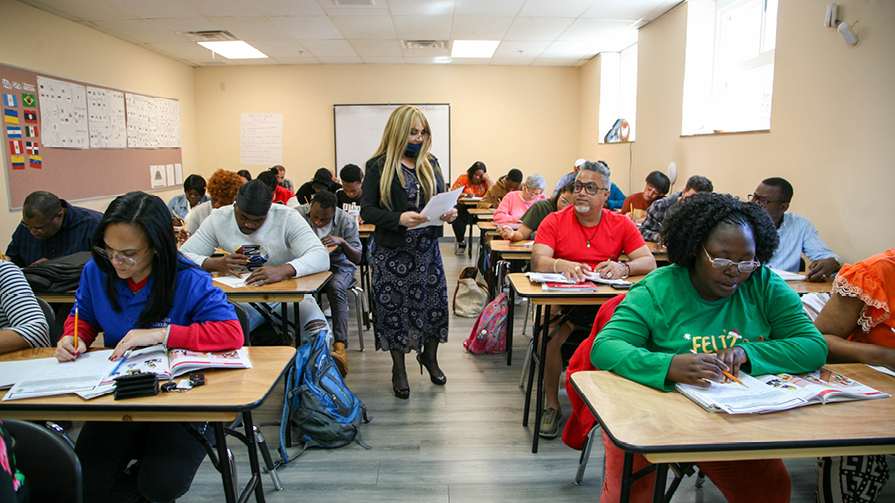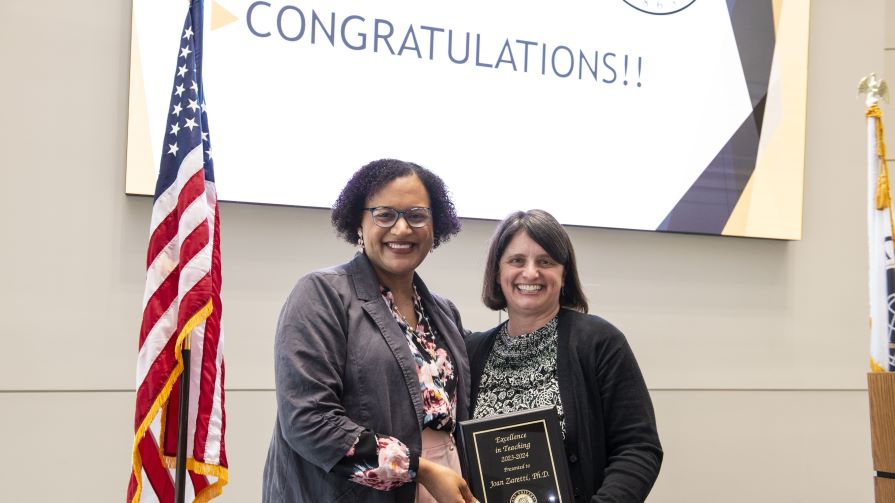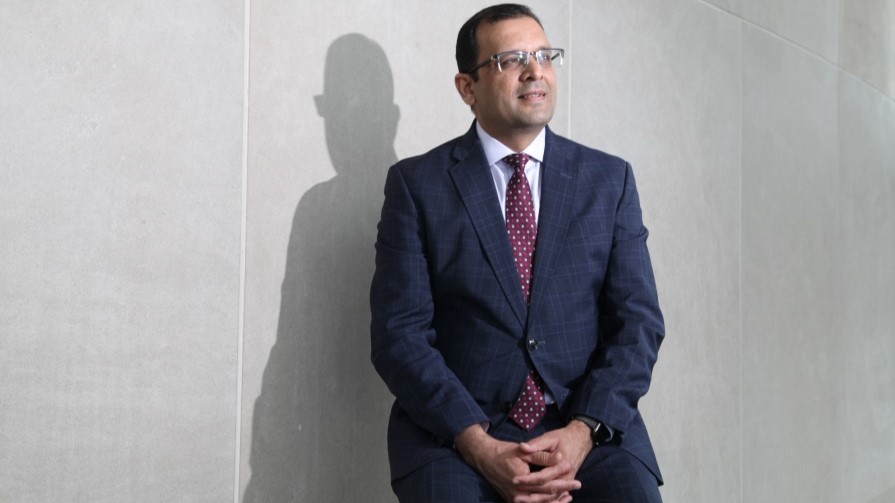Connor Matson ’26 had several goals when he logged onto a Zoom call with Anna Brown, the granddaughter of the late Olympian and Narragansett Nation member Ellison Brown. For starters, he wanted to learn more about the elite runner who won the 1936 and 1939 Boston Marathon but, more importantly, Matson wanted to add to the historical documentation of the man who’d impacted Indigenous culture, pride, and athletes.
Matson is part of Monica Ward Ph.D.’s “Doing Public History” course, where students spend the first half of the semester learning about different public history sectors and use the second half to work with a community organization on a history-related project. This spring, the group of 36 partnered with the Exeter-based Tomaquag Museum, an Indigenous-run center dedicated to telling and preserving the story of Indigenous peoples who lived on the land that, today, is known as Rhode Island.
From learning that Ellison roomed with Jesse Owens during the 1936 Olympics to discovering that the Boston Marathon’s Heartbreak Hill was named after him, Anna provided insight on how her grandfather took great pride in his culture and cared immensely for his family and friends.
“She gave me a ton of great information — a lot of which you can’t find in any archives, such as his personal life and how he grew up,” says Matson.
Along with several groupmates, Matson is creating a blog post on Ellison’s life for the Tomaquag Museum; it’s a simple but powerful step in restoring silenced voices and celebrating Indigenous lives.
Beyond classroom walls
When students enter her course, Ward makes it a point on day one to discuss the difference between public and academic history.
“The public history audience is everybody: It's our local community from Smithfield to Rhode Island to the larger whole,” says Ward, noting that the latter is directed toward scholars.
Over the 15-week course, students learn about historic home preservation, historic cemetery preservation, museum exhibit curation, oral history, and more. Students also receive opportunities to explore the history around them — such as volunteering to clean up a historic Smithfield-based cemetery to touring the Smith-Appleby House, a local home that dates to 1702 and features early New England cabinetry, stenciling, and period furniture.
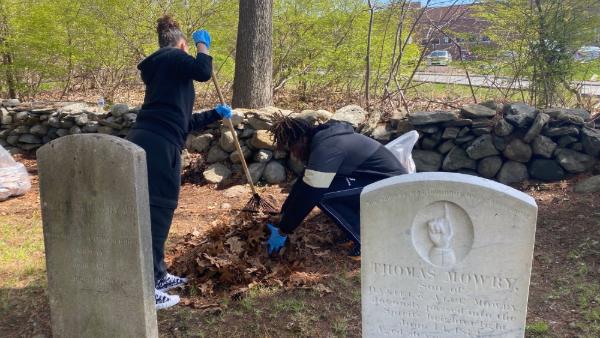
Focusing on local Indigenous history for a significant portion of the semester, undergrads studied the Narragansett Nation from pre-contact to present, with a heightened focus on Indigenous erasure. Students were tasked with creating a blog post that highlighted Narragansett stories and their topics ranged from studying the impact boarding schools had on Indigenous families, kids, and communities to the legal, economic, and social issues impacting the Narragansetts’ ability to build a casino.
Ward, whose background is in early American and Indigenous history, has worked with the Tomaquag Museum’s executive director, Loren Spears, a Narragansett Nation citizen, throughout the semester. Spears visited the university in March and spoke about the history, memory, and representation of Indigenous people to a packed audience in Bryant’s AIC Forum.
Preserving history
In one public history group, students are writing about Indigenous grave defacement and its effect on the Narragansett Nation. Grave robbing and defacement began in the 1630s and mainly occurred at tribal chiefs’ resting places; undergrads noted that jewelry was often taken along with skulls and human remains, which early anthropologists took for research.
“When someone defaces a grave, you're defacing history and essentially erasing it,” says Dante Brito ’26, adding that they’re leveraging the Rhode Island Historical Society’s archives for their research.
As groups prepare to present their final product to Spears, Ward notes that “Doing Public History” helps students develop empathy for different people and different circumstances and opens them up to the idea that history goes beyond the textbook.
“History is not something that's passed, and this particular class is a reminder that history is ongoing and all around us,” says Ward.
